Mercedes Treasures Its Past and Makes Money From It
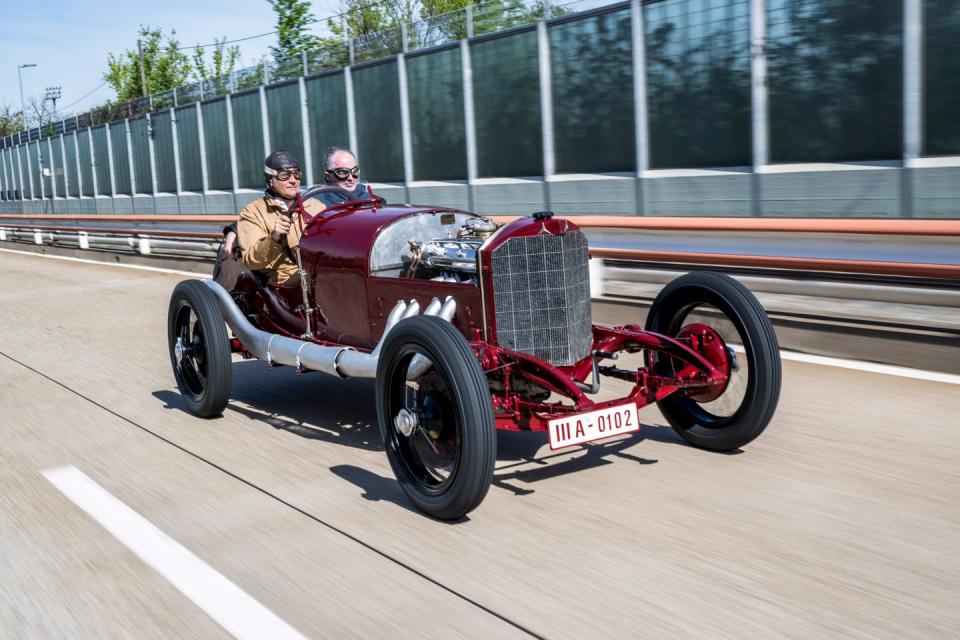
Having invented the automobile—or at least patented it—it is entirely appropriate that Mercedes-Benz puts more effort into preserving its history than any other automaker. That might sound like hyperbole, but it is actually a statistically provable fact. Mercedes has been building a collection of its own cars since before World War II and tries to preserve at least one example of everything it has ever built. Mercedes-Benz Heritage’s Classic Division now has more than 1200 cars, more than any other manufacturer or museum collection.
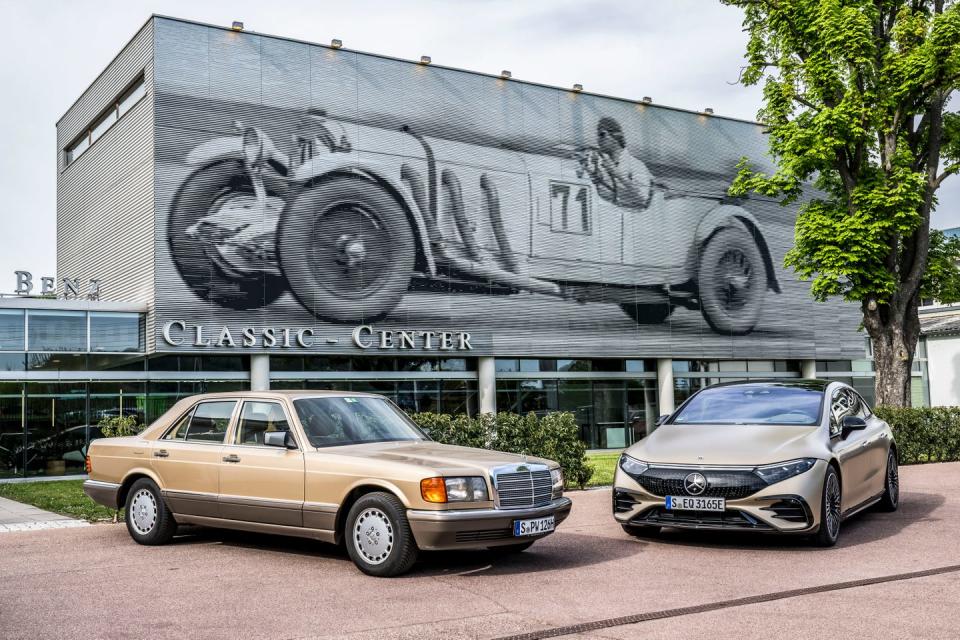
Doing this is neither easy nor cheap. Simply storing so many cars—and preventing their condition from deteriorating—is a huge commitment, especially as only a small number are exhibited in Mercedes’s Stuttgart museum at any point in time. Some are permanently kept in drivable condition, while others are restored to it to support marketing and PR activities around anniversaries and new product launches.
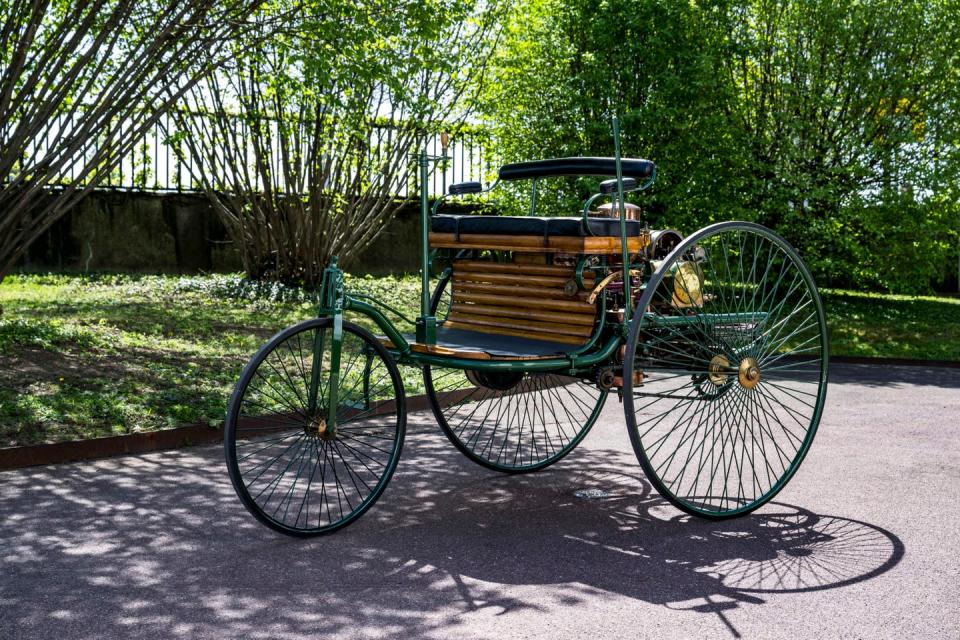
“Our heritage is not that we invented the car—the one-cylinder engine, then two, then four, then six, then eight, then 12,” says Marcus Breitschwerdt, Mercedes Heritage CEO. “Our heritage is that we were always striving for pioneer technology, for technological breakthroughs, to make things better. That’s our real heritage. That’s what the collection supports.”
The collection contains everything from prewar cars to modern Formula 1 cars, with numerous prototypes and one-offs. Some cars do leave. In 2022, Classic sold one of two Mercedes-Benz 300 Uhlenhaut Coupés for a record-breaking €135m (or $143 million at the time). But the total number is always growing; the last-of-line version of every production Mercedes is now automatically delivered to Classic for preservation.
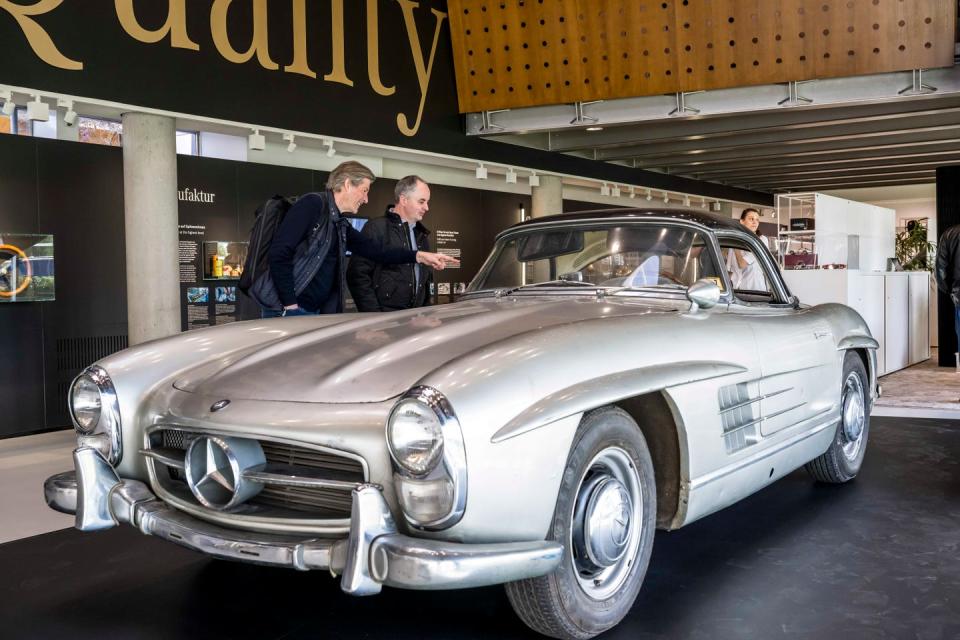
Breitschwerdt’s presence at the top of Mercedes-Benz Heritage is a measure of how important the division is. For many automakers, history is delegated to curators or librarians, but 62-year-old Breitschwerdt is a C-suite veteran, previously boss of Mercedes-Benz cars in Europe, and before that, head of the company’s U.K. subsidiary. He is also the nephew of Werner Breitschwerdt, Mercedes’s chairman of the board from 1983 to 1987. Under Marcus Breitschwerdt’s leadership, Heritage has become an autonomous division, responsible for its own substantial budget. It makes money by selling, restoring, and authenticating classic Mercs. It is also now in charge of parts supply for all Mercedes models that have been out of production for more than 15 years, which, it turns out, is highly lucrative: Classic sends parts to 170 countries, dispatching on average 19,000 three-pointed-star bonnet emblems a year among tens of thousands of other lines.
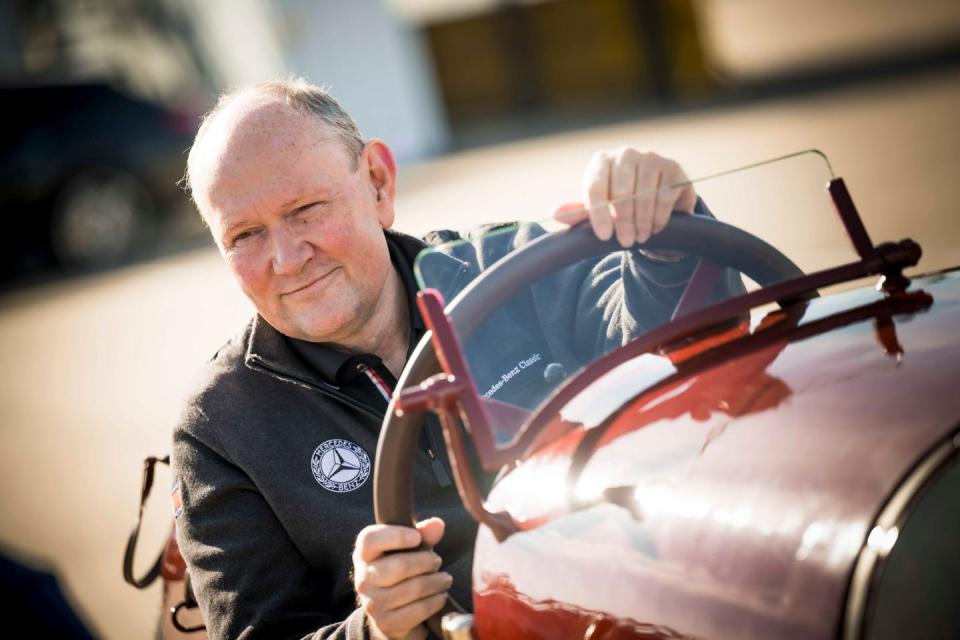
“The business we run pays for it all,” Breitschwerdt says. “When I took over two years ago, the revenues were barely €40 million. Within the next three years, that will rise to €300 million a year, and we will have at least a 10 percent return on sales.”
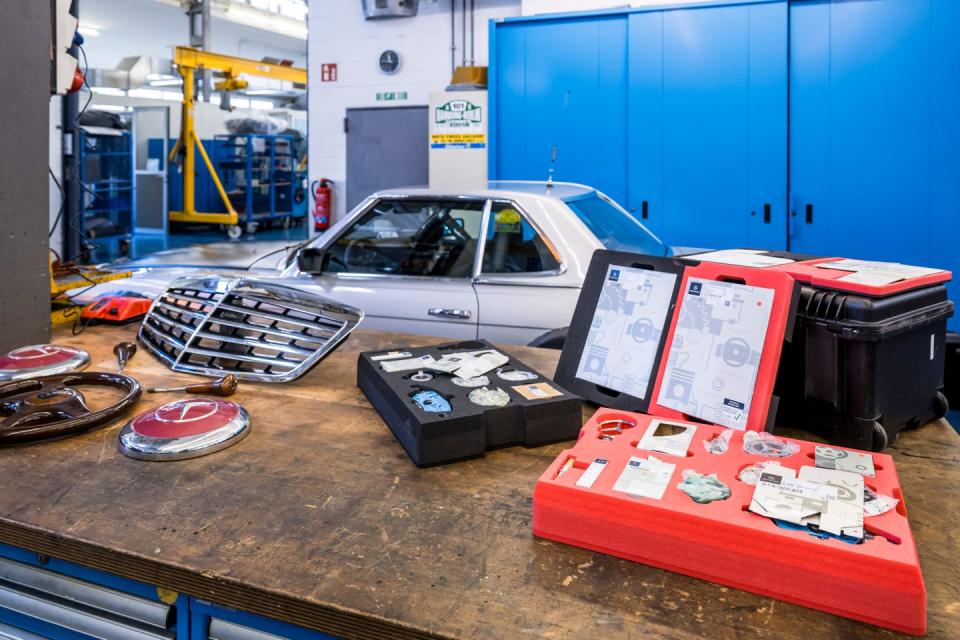
So anybody complaining about the cost of replacement parts for an older Merc should take some comfort from the knowledge they are subsidizing the company’s peerless heritage collection. Which has to be better than just giving it to stockholders, right?
The Mercedes-Benz Classic Center is almost certainly the most interesting thing about the sleepy Stuttgart suburb of Fellbach. The public-facing side of the Center is a relatively small part of it, including a showroom and display area with an unrestored original 300 SL Coupé and a spectacular 1930 SS Cabriolet built for an Indian Maharaja, the showpieces on the day of my visit. There are also the sort of artifacts the company is obligated to keep but can’t find any obvious home for, including twin life-sized marble statues of Karl Benz and Gottlieb Daimler.
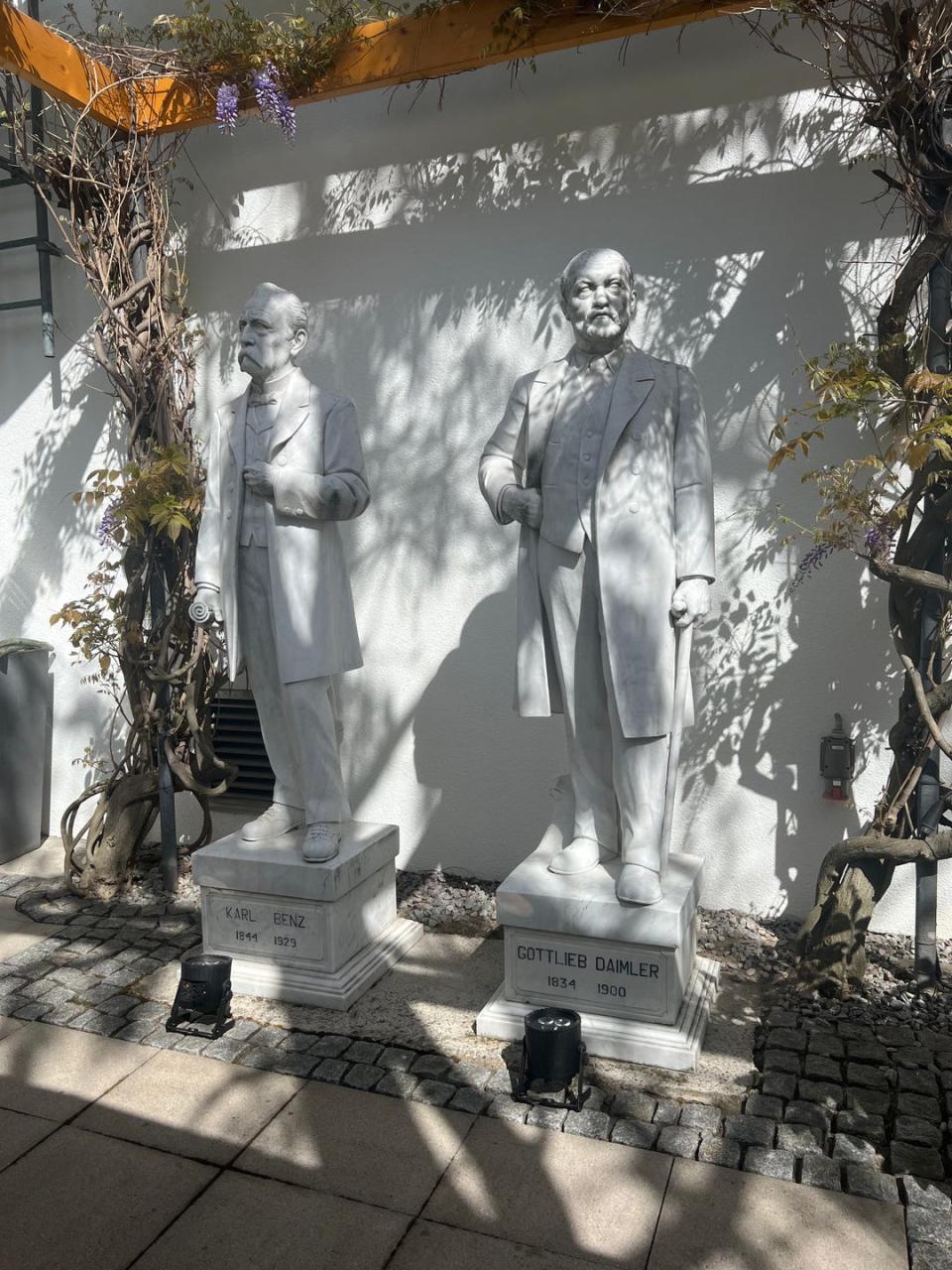
But it is passing beyond the niceness and into the workshop behind it that turns the experience truly special. On the day of my visit, the shop bays contain a McLaren-Mercedes MP4-13 Formula 1 car from 1998 with its rear bodywork removed; an original car from the 1924 Targa Florio, at the tail end of a heavy restoration for its centenary; a Mercedes-McLaren SLR Roadster; and a 190E Evo 2 prototype race car in plain livery but with a full roll cage. There’s also a Mercedes C11 Group C prototype racer, which looks track-ready. I’m cynical enough to suspect this has been deliberately set up to demonstrate the depth and breadth of the corporate collection, a suggestion that Classic’s PR guy hotly denies: “Trust me, this is 100 percent normal. It is always like this.”
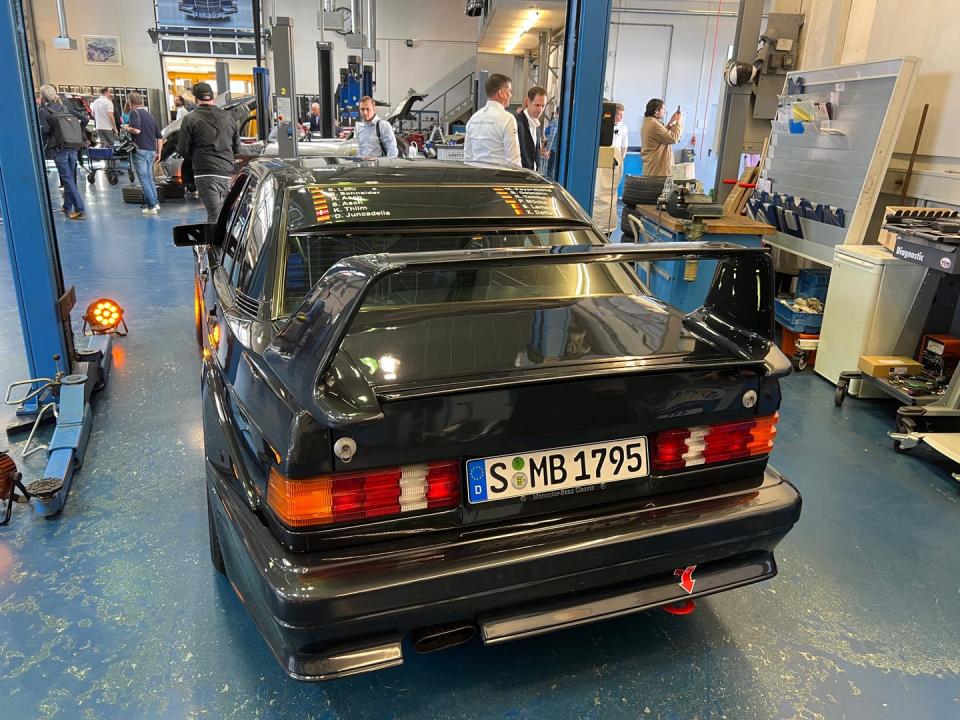
The Targa Florio car is the center of attention. At the time of my visit, it was being readied for a series of engagements, including this year’s Goodwood Festival of Speed. It is an excellent example of how seriously Classic takes its duty to the past, even when it means making unwelcome discoveries. Since the Thirties, this has been part of the collection as the winning car from the Sicilian endurance classic, using a supercharged 2.0-liter four-cylinder engine created under the leadership of Ferdinand Porsche.

For the last two decades, the Targa Florio car sat on some fake concrete banking as a static exhibit at the museum alongside other stuffed-and-mounted racers. But when the restoration commenced, it was soon realized it was not, in fact, the victorious car that had been driven by Christian Werner, the first non-Italian to win the race. Parts numbers confirmed this is actually the sister car driven by Christian Lautenschlager that had finished in 10th place. The car had also been subject to many modifications over the years, but the presence of the original technical drawings and specifications in the Mercedes archive allowed it to be returned to originality. That required both a full engine rebuild—it had seized over the years of static display—and even enlisting the help of art restorers to work out the paint color it raced in. Mercedes had, cannily, chosen to compete in Italian red rather than the traditional German silver the car had first been painted in, reducing the risk of patriotic Sicilians chucking rocks at a foreign interloper.
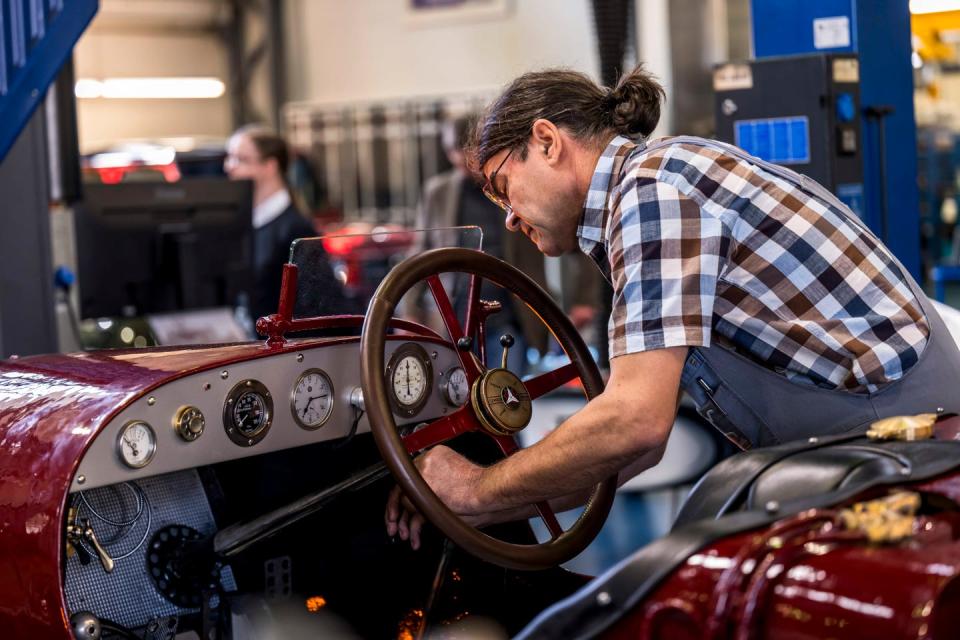
Altogether, getting the car back to drivable condition took thousands of hours of work and a huge amount of money, which I got to appreciate with a passenger ride around Merc’s Untertürkheim test track, as former Formula 1 and DTM star Karl Wentlinger gave a first shakedown run. For almost any other company, this level of investment in a single vehicle would have required argument and fighting over budgets to find the necessary resources. But not, it turns out, for Mercedes-Benz Classic.
“The car has been part of the collection, was in the museum, and will now go to do events. So that is three different budgets, if you like,” explains Breitschwerdt. “But I don’t need to ask for budget.... I can make those decisions myself based on the framework of what we want to achieve.”

So although, in terms of investment, the Targa Florio car is now one of the most expensive cars in the collection in terms of the money spent on the restoration, it will remain a usable asset for many years to come, with the fact Mercedes already owned it making the decision to spend the money far easier. It turns out that many of the collection’s cars are, quite literally, almost priceless; Breitschwerdt lets slip that the Ulenhaut Coupé that was auctioned was listed on Heritage’s balance sheet as a fully depreciated asset worth just €3.75. Meaning its sale netted a profit of €134,999,996.25.
The cars that aren’t on display and aren’t being worked on are stored in what Classic likes to call its "Holy Halls." That description might summon mental images of the final scene in Raiders of the Lost Ark, but the reality is less exciting—at least from the outside—with a series of large, anonymous industrial units a discreet distance from the Classic Center. I get the chance to take a peek inside one of the largest of thesg but with the strict stipulation that I’m not allowed to take my own pictures. Dennis Heck, Classic’s head of collection, says the risk is that the exact location would be given away in a photograph’s metadata.

While some of the smaller halls are reserved for race machinery and other high-value items, the one I was taken to by Heck was a general-purpose warehouse containing around 80 cars, most of which are in longer-term hibernation. It’s a fascinating insight into just how varied the collection is, with mainstream models next to purpose-built one-offs. So there is a line of 600 ‘Grosser’ limos from the Sixties, the first-gen ML-class ‘Popemobile’ constructed for John Paul II, and a California-plated W220-generation S-Class which, it transpires, is here as it formerly belonged to Arnold Schwarzenegger.
But the more ordinary cars are actually more interesting, presenting a snapshot of the company’s fortunes at different times. Heck explains that Merc’s policy is to build the last-ever version of each model to what is reckoned to be the most typical configuration from across its life cycle—hence, a 190E in homely four-cylinder base spec and what appears to be a showroom-fresh example of the first-generation Mercedes B-Class, a model so dull that many will have forgotten it ever existed. But the very universality of Classic’s collection is core to its purpose.
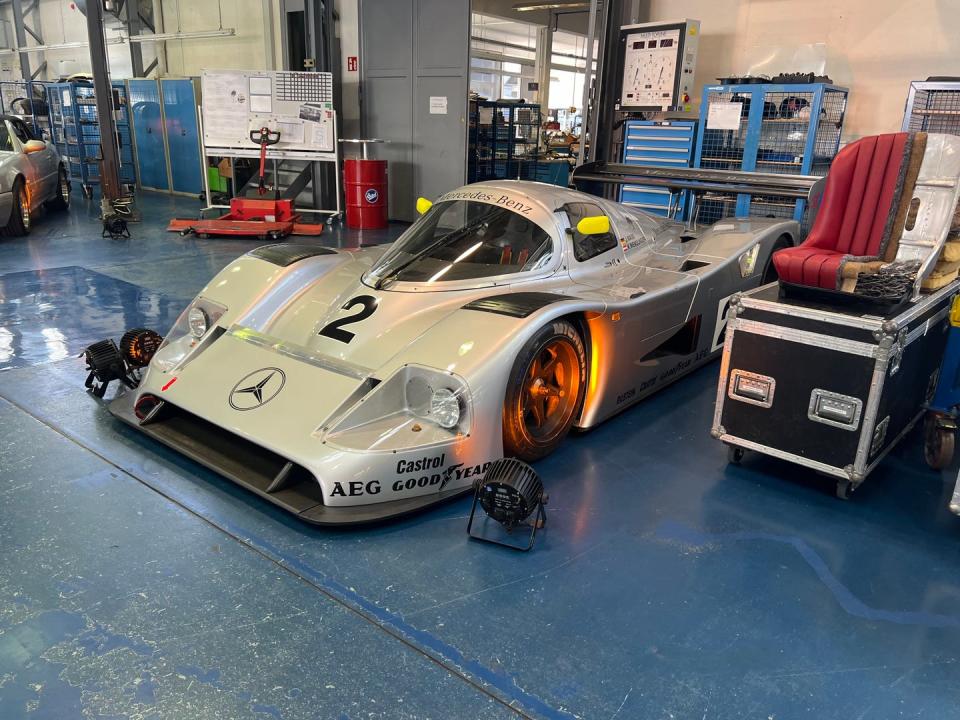
Yet, strangely, mistakes do happen. One of the cars Heck introduces me to is a first-generation C202 C-Class—the one that was sold from 1994 to 2002. My first presumption is that this is another last-of-line car, but it turns out it was only purchased recently—and after a long search across Germany for a near-pristine example. “Nobody remembers why, but we didn’t save the last one,” Heck explains. “It was forgotten.”
Mercedes’s attitude to its history is comprehensive but also cautious. The Classic Center now offers a certification service for higher value cars, with a €20,000 fee (before tax) giving the chance to have a car examined by experts and researched in the archive to confirm its provenance. Or sometimes the opposite—apparently several non-original 300SLs have been detected.
But one thing is clear, Mercedes is not going to follow the lead of some other upmarket automakers and create officially sanctioned ‘continuation’ versions of high-value classic cars.
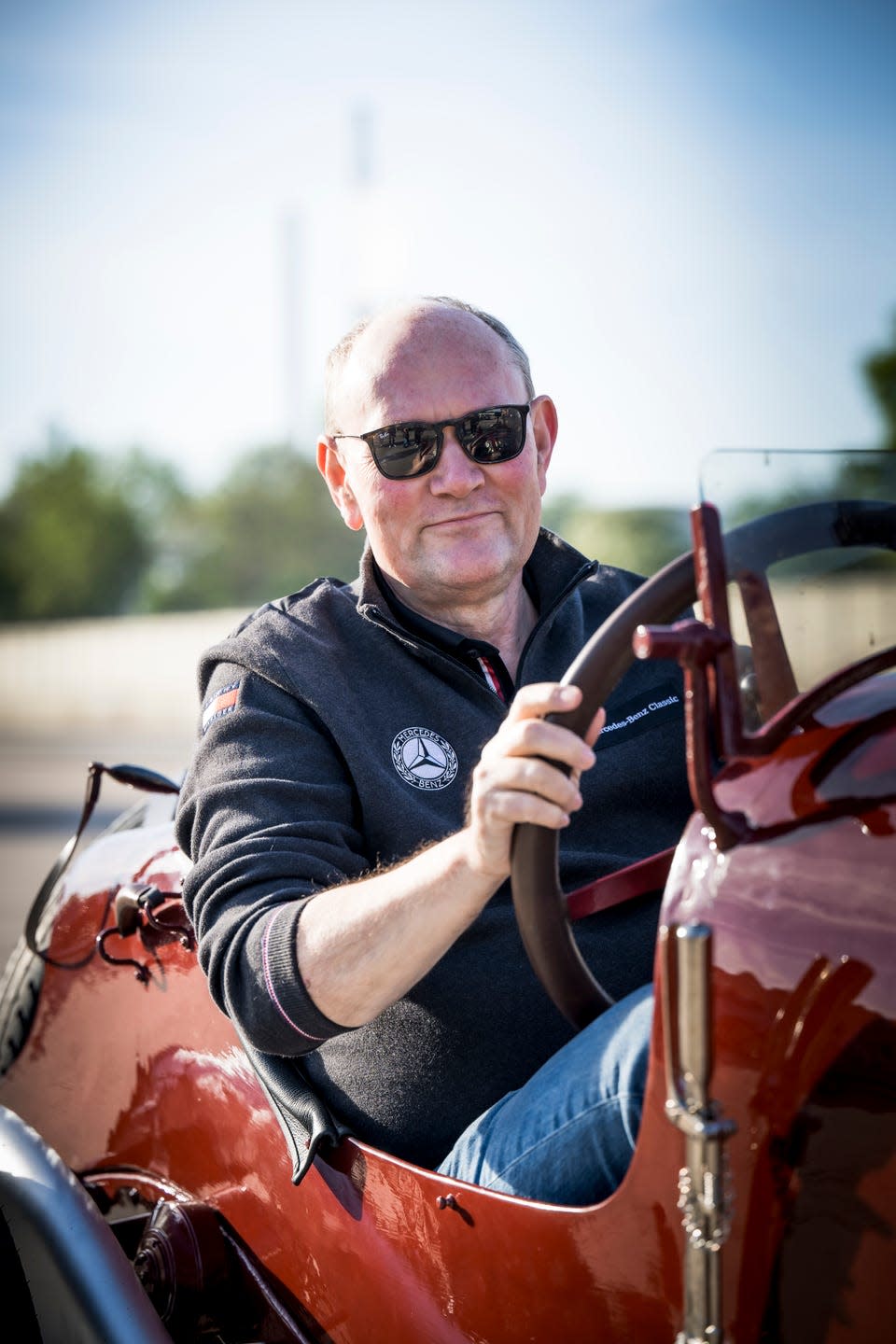
“It would be completely inappropriate for us,” says Breitschwerdt. “As long as I am in this function then it would be over my dead body.... Imagine if you pay a lot of money to buy a [Twenties] Kompressor Mercedes for €15 million, or something like that. And you are so proud of it and restore it and then I say, ‘Good news! I have another one, but it is brand new and you can choose the color!’ How cruel would that be for a true collector?”
Conversely, if a car was never built or has gone extinct, Breitschwerdt says he could see the logic behind constructing a purchasable replica. There is a precedent here, Mercedes having effectively built an early continuation when it sold a limited run of replicas of the original 1886 Benz Patent Motorwagen in the Eighties, these being built by a small company in the U.K. As there was no privately owned original Motorwagen, this wasn’t going to upset anyone.
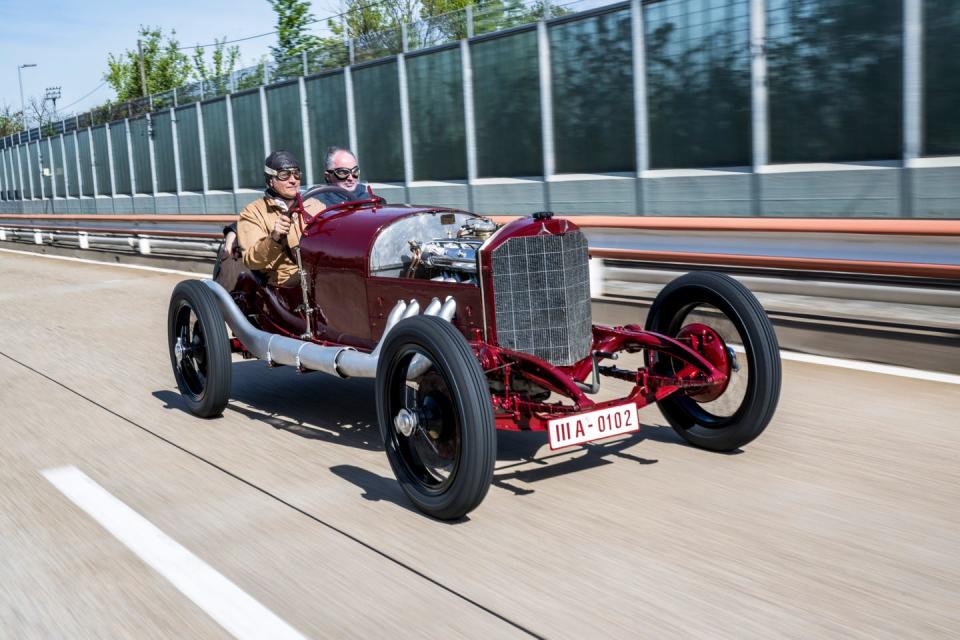
Breitschwerdt’s attitude to EV conversions of classics is similarly robust.
“If you take a Gullwing and rip out the drivetrain and put in an electric motor, you will not have my blessing,” he says. “It is an act of barbarism, in my opinion.... Or, with something like a Pagoda, I think it would be a crime to do that. You really have to look at it with a feeling for what is appropriate because you have a responsibility. You own a piece of civilization, and as the custodian, you can choose to ruin it or not.”
“I say why would you do it? If it’s about the electric drivetrain, then there are so many cars we offer with a perfect electric drivetrain. And if you want carbon neutrality, then look to e-fuel, which we support.”
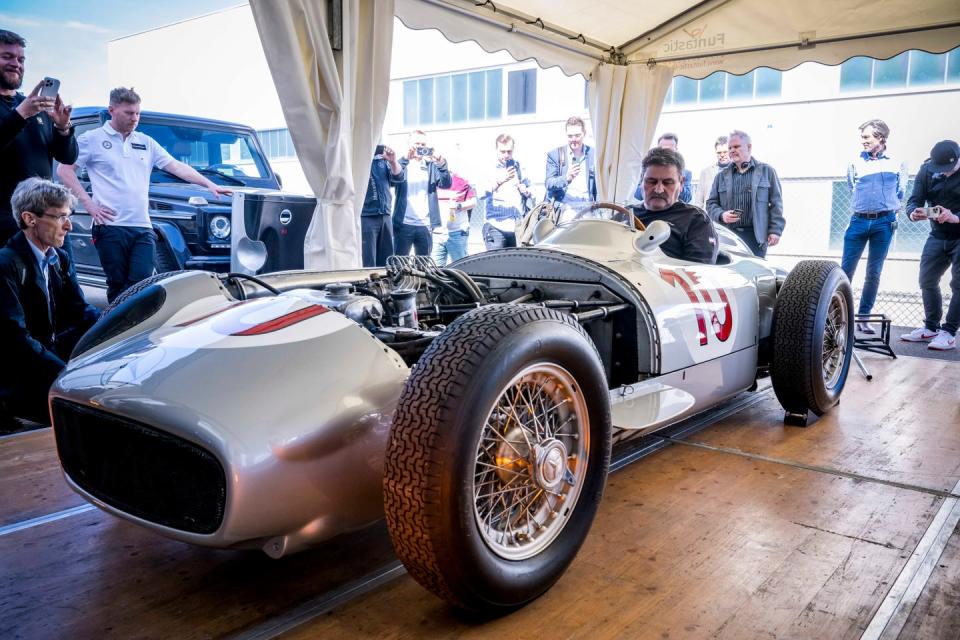
Again, there is nuance to Breitschwerdt’s position. If a car survives in large numbers—he cites the R109 Mercedes SL produced from 1971 to 1988—then it could be given a powertrain transplant without offending the brand’s heritage. But it clearly isn’t an area that Classic is considering entering itself.
This raises the question of other potential second lives for abundant older Mercs and the fascinating revelation that Classic has considered recreating the 190E 2.3-16 race cars that were produced for a one-off event at the opening of the new Nürburgring Grand Prix circuit in 1983. Mercedes called in lots of favors for that one; the grid ultimately consisted of no fewer than nine past and future Formula 1 world champions and was won by a youthful Ayrton Senna.
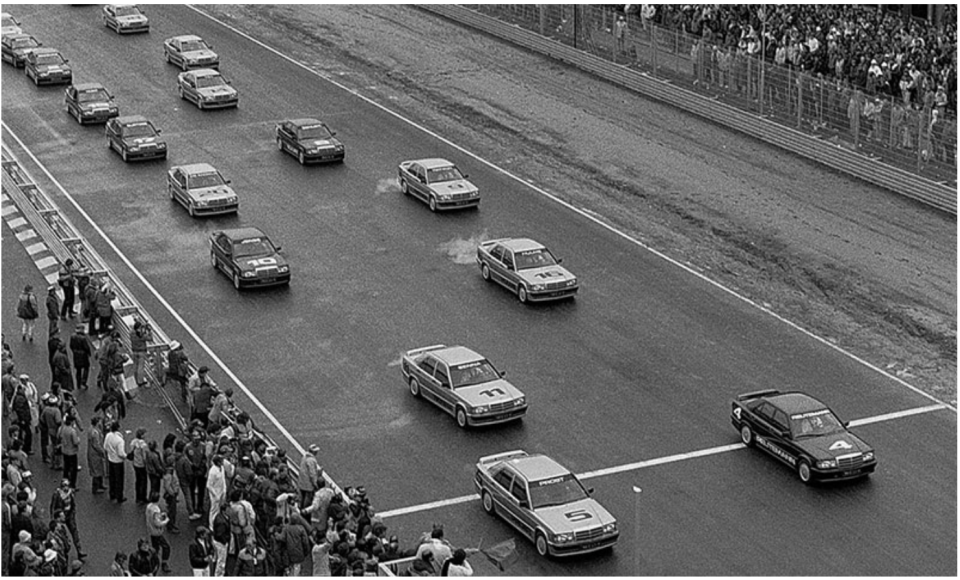
“We have thought it would be fun to do a W201 [190E] series one day, that would be something I would support,” says Breitschwerdt. “But, of course, it wouldn’t say ‘Senna’ on the side of the car; it would say ‘Marcus.’”
Sign us up for that one.
You Might Also Like

 Yahoo Autos
Yahoo Autos 